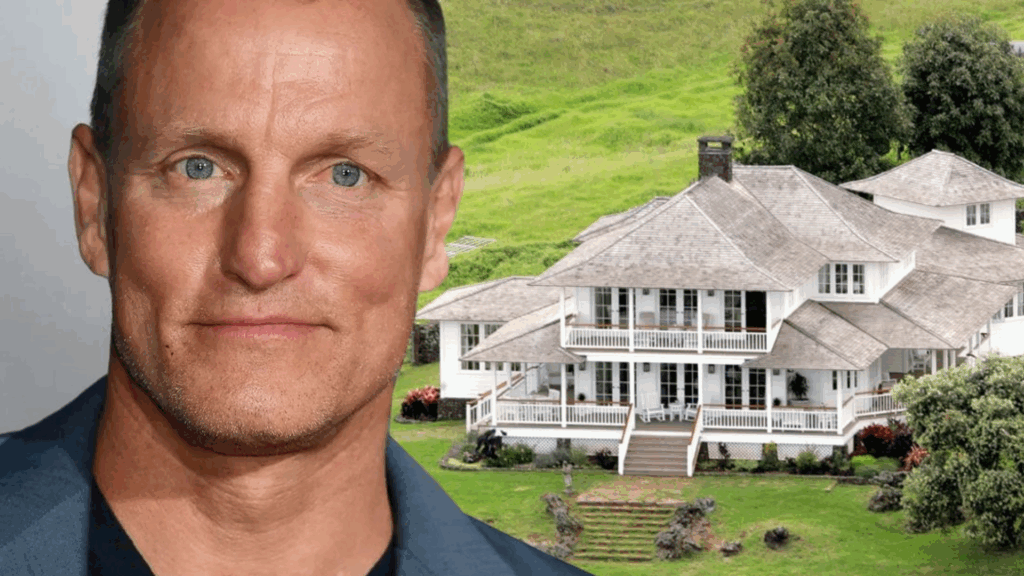Woody Harrelson isn’t your average Hollywood star. Known for roles in Cheers and Zombieland, he’s also a passionate environmental advocate.
His Maui estate is Hawaii’s largest fully off-grid home, powered entirely by solar energy and rainwater collection.
More than just a luxury retreat, the property reflects Harrelson’s deep commitment to sustainable living.
Built with eco-friendly materials, it blends high-end design with self-sufficiency.
From award-winning acting to real-world green choices, Harrelson proves that comfort and conservation can coexist.
Here, you’ll get a closer look at his home, lifestyle, and how he’s leading by example in sustainable celebrity living.
Key Insights of Woody Harrelson’s
Career Success and Wealth
From Emmy-winning actor to environmental pioneer, Harrelson has built a $70 million net worth through smart choices in both entertainment and real estate.
His career spans four decades, including notable roles from “Cheers” through to “White House Plumbers” (2024), earning him an Emmy Award and three Academy Award nominations.
Property Portfolio Impact The Beverly Hills Chapter (1988-2017)
Starting with a $1.5 million investment in 1988, Harrelson transformed a traditional Beverly Hills mansion into an eco-friendly showcase.
The 5,000-square-foot Mediterranean estate sold for $11 million in 2017, proving that environmental upgrades can significantly increase property value.
His additions of solar panels, water-smart systems, and energy-efficient features set new standards for luxury home improvements.
The Maui Sanctuary (2011-Present)
Perched above Hamoa Beach, Harrelson’s $13.5 million Maui compound stands as Hawaii’s largest self-sufficient residence.
This 8.5-acre property combines million-dollar ocean views with 2024’s latest eco-technology.
The upgraded solar system produces 20% extra power, while a 20,000-gallon rainwater system and high-tech greenhouse support complete self-sufficiency.
The property’s organic gardens supply 70% of household food, and a natural swimming pool offers chemical-free luxury.
Through smart design and constant innovation, this home proves that high-end living and environmental care can work in perfect harmony.
Future Vision
As of 2024, Harrelson continues expanding his environmental influence through new initiatives in sustainable technology, community solar projects, and environmental education.
His properties serve as both personal sanctuaries and models for sustainable luxury living, proving that environmental responsibility and high-end comfort can successfully coexist.
Spotlight on Woody Harrelson
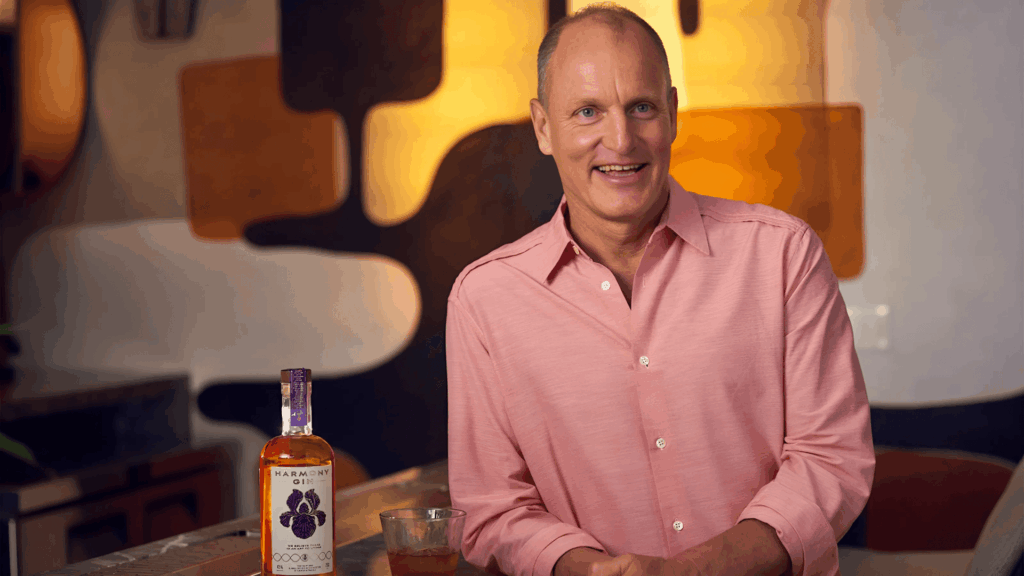
Woody Harrelson gained fame as Woody Boyd in Cheers (1985–1993), earning an Emmy.
He starred in films like Natural Born Killers, No Country for Old Men, The Hunger Games, and Three Billboards.
With a net worth of $70 million, his success is also attributed to astute real estate investments.
In the 1990s, Harrelson adopted an environmentalist stance, embracing a vegan lifestyle and supporting eco-friendly ventures.
His Maui home reflects these values: off-grid, solar-powered, and built with sustainable materials.
Unlike his Beverly Hills estate, the Maui property blends comfort with conservation, demonstrating his commitment to living by his values.
Inside Woody Harrelson’s Current House in Hawaii
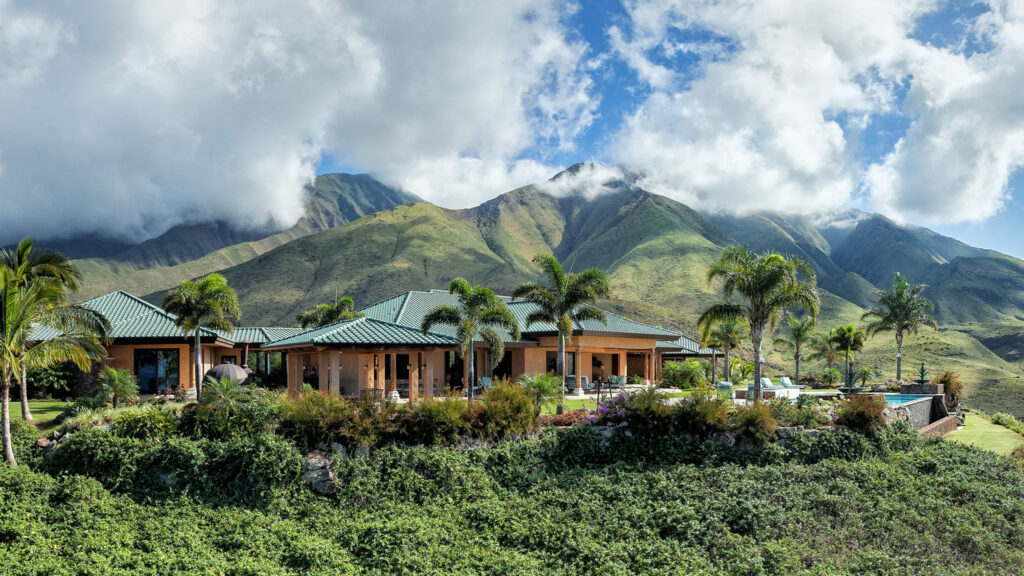
Overlooking Hamoa Beach in Maui, Harrelson’s 8.5-acre property is Hawaii’s largest self-sufficient residence.
The compound, which cost an estimated $13 million, highlights modern eco-living at its finest.
The main house features a smart design with floor-to-ceiling windows capturing Pacific Ocean views.
Recent 2024 upgrades include an expanded solar array that now generates 120% of the property’s power needs.
The state-of-the-art rainwater system, enhanced in late 2023, can store up to 20,000 gallons.
The newest addition to the property is a high-tech greenhouse using automated climate control powered by solar energy. Here, Harrelson grows rare Hawaiian plants alongside everyday vegetables.
A newly added observation deck offers 180-degree views of the coastline, creating the perfect spot for sunset watching.
Woody Harrelson’s Maui home blends sustainability with style through advanced eco-features and thoughtful design.
Outdoor areas feature a chemical-free pool, meditation zones, guesthouses, and stone paths through native gardens.
1. The Living Room Where Nature Meets Comfort
Step into Woody’s living room and you’ll find a space that feels more like a beach house than a celebrity home. The room opens to stunning ocean views through tall windows that stretch from floor to ceiling.
Instead of flashy decorations, you’ll spot simple bamboo furniture with soft, natural fiber cushions. Local Hawaiian art hangs on the walls, and handmade throws add comfort to the seating areas.
The space includes meditation cushions – a nod to Woody’s wellness practices – and family photos that make the room feel lived-in and real.
2. The Kitchen With Plant-Based Paradise
The kitchen tells the story of Woody’s commitment to healthy, sustainable living. It features energy-saving appliances and locally sourced bamboo cabinets.
The countertops are made from recycled materials, showing how eco-friendly choices can still look beautiful.
The space connects to an herb garden just outside, where Woody grows some of his own ingredients.
Solar-powered appliances help keep the kitchen’s carbon footprint tiny while still providing all the modern conveniences needed for cooking.
3. The Master Bedroom Where Simple Living Meets Ocean Views
Woody’s master bedroom shows that luxury can be understated. The room features a handcrafted bed made from local sustainable wood, dressed in organic cotton linens.
Large sliding glass doors open directly to a private lanai, letting in fresh Pacific breezes and the gentle sound of waves.
A small reading nook sits by the window with a collection of well-worn books about environmentalism and meditation.
The walls, painted in soft earth tones, display just a few carefully chosen pieces of local art.
4. The Home Office Where Creativity Meets Consciousness
Woody’s office space proves you don’t need much to create something special. This modest room uses reclaimed wood furniture and gets plenty of natural light through its windows overlooking the garden.
He’s set up a simple standing desk that faces the ocean – perfect for reading scripts or taking video calls.
The space includes some personal items that tell his story: a few favorite film awards sit beside potted plants, and the walls feature photos from environmental campaigns he’s supported.
There’s also a comfortable meditation cushion in the corner, showing how he blends work with wellness.
5. The Garden With Self-Sustaining Paradise
The heart of Woody’s outdoor space is his organic garden, which produces fresh vegetables and fruits year-round.
The garden uses smart water management, with a rainwater collection system that stores Hawaii’s frequent rains for dry spells.
Walking paths are made from local stone wind through beds of kale, tomatoes, and tropical fruits, while native Hawaiian plants attract birds and helpful insects. A long table made from reclaimed wood sits under the shade of palm trees
The garden also includes a composting area where kitchen scraps become rich soil for next season’s plants.
6. The Natural Swimming Area
Instead of a traditional chlorine pool, Woody opted for a natural swimming pond that works with the environment.
The pond uses plants and beneficial bacteria to keep the water clean, creating a home for small fish while providing a beautiful place to swim.
Around the swimming area, you’ll find simple wooden lounge chairs topped with weather-resistant cushions made from recycled materials.
Solar-powered lanterns provide soft lighting in the evening, and a bamboo shade structure offers relief from the Hawaiian sun.
7. Building Green from the Ground Up
Every part of Woody’s house shows his commitment to protecting the environment. The home runs completely off the grid, powered by a robust solar system with backup batteries that store energy for cloudy days.
Its design uses natural airflow to stay cool, cutting out the need for constant air conditioning.
The walls use local bamboo and wood certified by forest protection groups. All the paints and finishes are non-toxic and plant-based, keeping the indoor air clean and healthy.
Even small details matter – like the natural fiber rugs and the recycled glass tiles in the bathrooms.
Smart Systems for Daily Living
The house has some impressive features that save resources:
- A rainwater capture system collects water from the roof
- Smart windows that maximize natural light
- Thick walls made from natural materials that keep the house cool
- LED lights powered by stored solar energy
- Low-flow water fixtures throughout the house
What makes Woody’s home special isn’t just these green features – it’s how naturally they fit into daily life.
The house proves you can live comfortably while caring for the earth, something Woody has always stood for.
How Much Did Woody Harrelson Spend On His Property In Hawaii?
Woody Harrelson’s Maui estate, purchased for $7.5 million in 2012, reflects his deep commitment to sustainable living.
Over 5 acres with oceanfront views, the property features a solar home, rainwater systems, reclaimed wood, and eco-friendly materials.
Designed for self-sufficiency, the property features a natural swimming pool, guesthouses, and lush tropical gardens.
The estate’s luxury and green features drive high costs like taxes, solar upkeep, and landscaping.
Located in Hawaii’s prime area, the home blends eco-values with modern comfort, serving as a private retreat and a sustainable luxury model.
Tour of Woody Harrelson’s Former Real Estate Gems
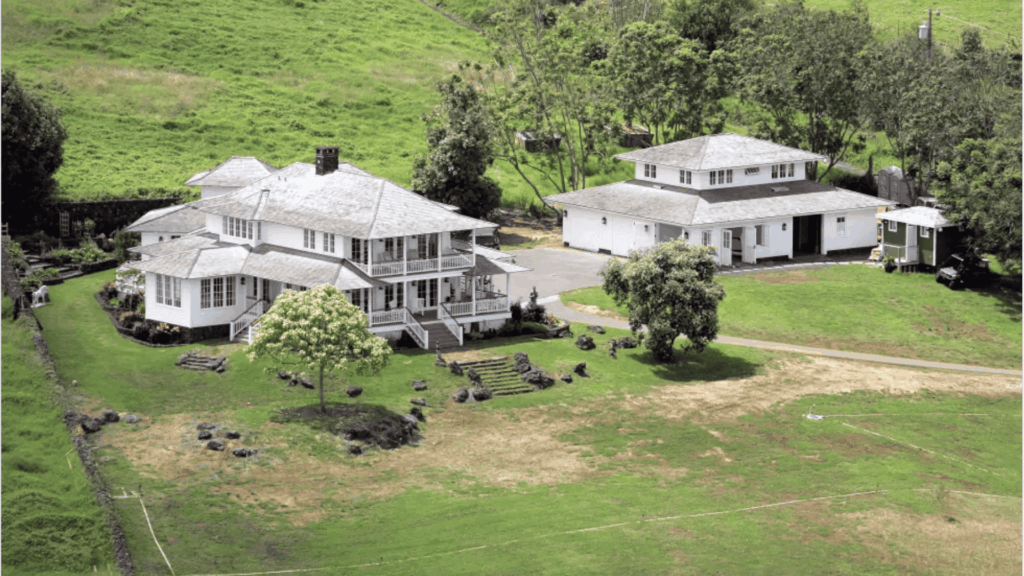
Woody Harrelson’s real estate journey began with a 2.5-acre Beverly Hills estate, bought for $1.5M in 1988 and sold for $11M in 2017.
The Mediterranean-style home included luxuries like a screening room, tennis court, wine cellar, and later added solar panels, gardens, and energy-efficient systems.
In the 1990s, he also kept a high-end Manhattan apartment as an East Coast base.
From 2000 to 2011, his Sugar Beach property in Maui deepened his interest in sustainable living.
These homes reflect his evolution from Hollywood luxury to eco-conscious design, culminating in his current off-grid Maui sanctuary.
Unique Features of The Beverly Hills Legacy
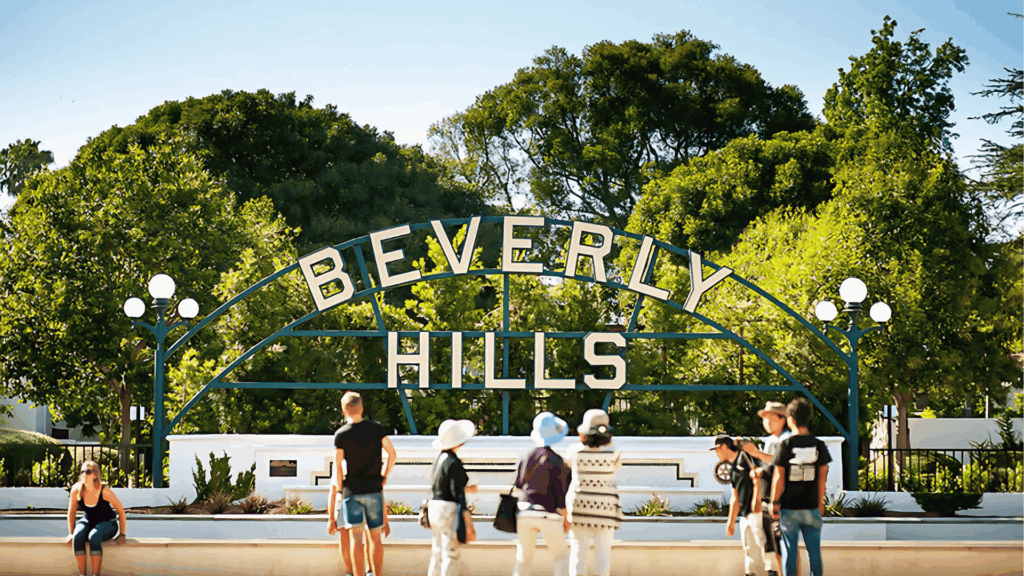
| Feature | Details |
|---|---|
| Location | Nestled in the exclusive Beverly Hills area, offering stunning views from downtown Los Angeles to the Pacific Ocean. |
| Design and Style | A 5,000-square-foot Mediterranean estate with classic terracotta roofing and white stucco walls, blending luxury with environmental mindfulness. |
| Environmental Features | Included one of Beverly Hills’ first celebrity-owned solar installations (added in 2008), powering 60% of the home. |
| Water Efficiency | Water-smart irrigation systems and native California plants reduce water consumption compared to neighbors’ traditional lawns. |
| Energy Efficiency | Energy Star appliances, LED lighting, and a saltwater pool eliminate harsh chemicals while maintaining luxury standards. |
| Value | Sold for $11 million in 2017, with its combination of luxury, environmental features, and prime location contributing to its high sale value. |
Financial Impact and Property Appreciation
| Property | Purchase Price | Sale/Current Value | Appreciation (%) | Additional Financial Impact |
|---|---|---|---|---|
| Beverly Hills Estate | $1.5 million (1988) | $11 million (2017) | 633% | Significant value increase due to environmental upgrades and prime location. |
| Maui Compound | $8.5 million (2011) | $13.5 million (2024) | 59% | Environmental features such as solar systems and rainwater collection save $25,000 annually. |
Over four decades, Harrelson’s strategic real estate moves have significantly boosted his $70 million net worth.
The property’s environmental features drive its value upward – the solar system saves $15,000 annually, while the rainwater collection cuts another $10,000 from yearly expenses.
Woody Harrelson’s Real Estate Investments
Woody Harrelson’s real estate journey reflects a 35-year shift from luxury to sustainable living.
His current $25 million portfolio includes a $13.5 million Maui compound, the largest off-grid home in Hawaii.
His organic garden provides 70% of the household’s produce, while innovative systems efficiently manage energy and water use.
His Beverly Hills home, purchased for $1.5 million in 1988, sold for $11 million in 2017, a 633% gain.
These results demonstrate that eco-friendly upgrades not only reduce environmental impact but also increase value.
Harrelson demonstrates that luxury and sustainability can coexist to deliver both comfort and strong long-term returns.
Beyond the Properties of Woody Harrelson’s Broader Impact
| Aspect | Details |
|---|---|
| Living His Values | On his Maui property, Harrelson practices sustainable living, hosting workshops on sustainable farming and plant-based living. His home is a model for others. |
| Food and Lifestyle Impact | A raw vegan since 1987, Harrelson supports organic farmers and food producers. He helped establish organic food markets in Maui to benefit the local community. |
| Business Decisions | Harrelson invests in environmental startups, including companies focused on renewable energy and sustainable materials, creating jobs and supporting innovation. |
| Public Voice | Through interviews, public speaking, and home tours, Harrelson shares his environmental message, inspiring similar eco-friendly projects in Hawaii and California. |
| Education and Outreach | Harrelson works with local schools in Hawaii, teaching sustainable farming and renewable energy, using his property as a real-world classroom for students. |
Conclusion
Woody Harrelson’s real estate story demonstrates how luxury and sustainability can coexist.
From his Beverly Hills estate to his off-grid Maui retreat, he’s used his success to support eco-conscious living.
His current home is a model of self-sufficiency, incorporating solar power, rainwater systems, and natural materials to achieve everyday comfort.
You don’t need millions to follow his lead.
Small steps such as using energy-efficient appliances, planting a garden, or reducing water usage can make a significant difference.
Harrelson proves that living sustainably isn’t just possible; it’s rewarding, practical, and a meaningful way to care for both your home and the planet.

